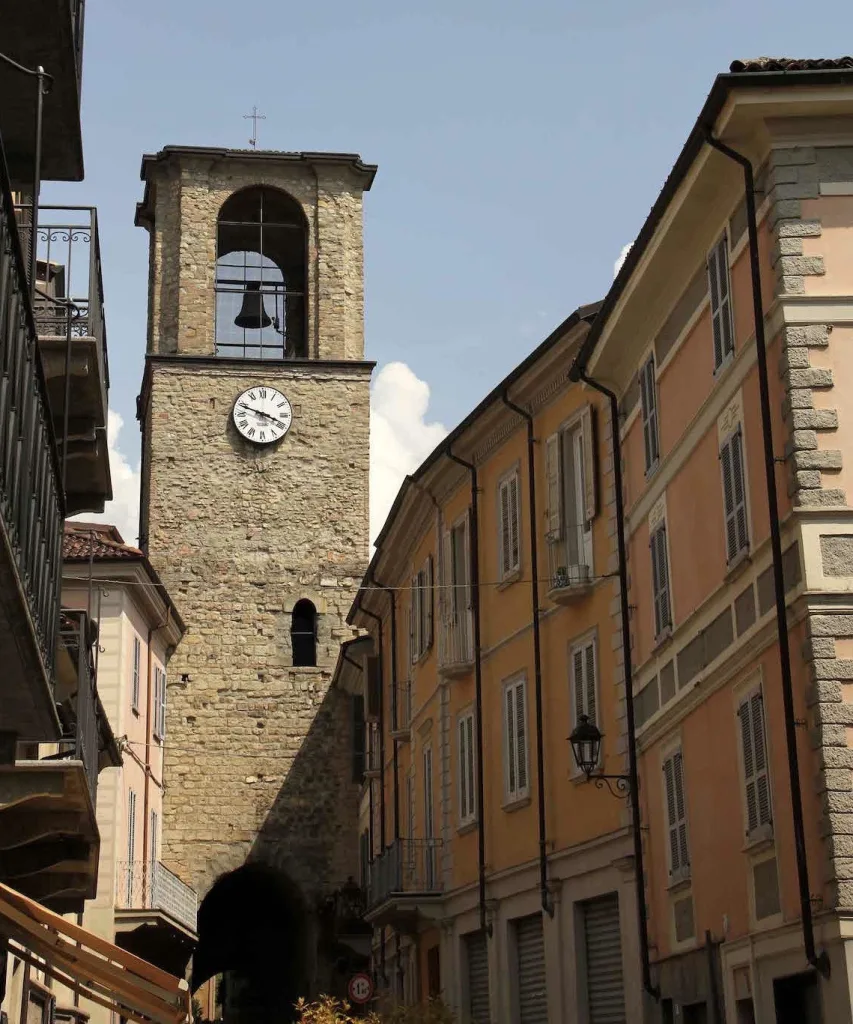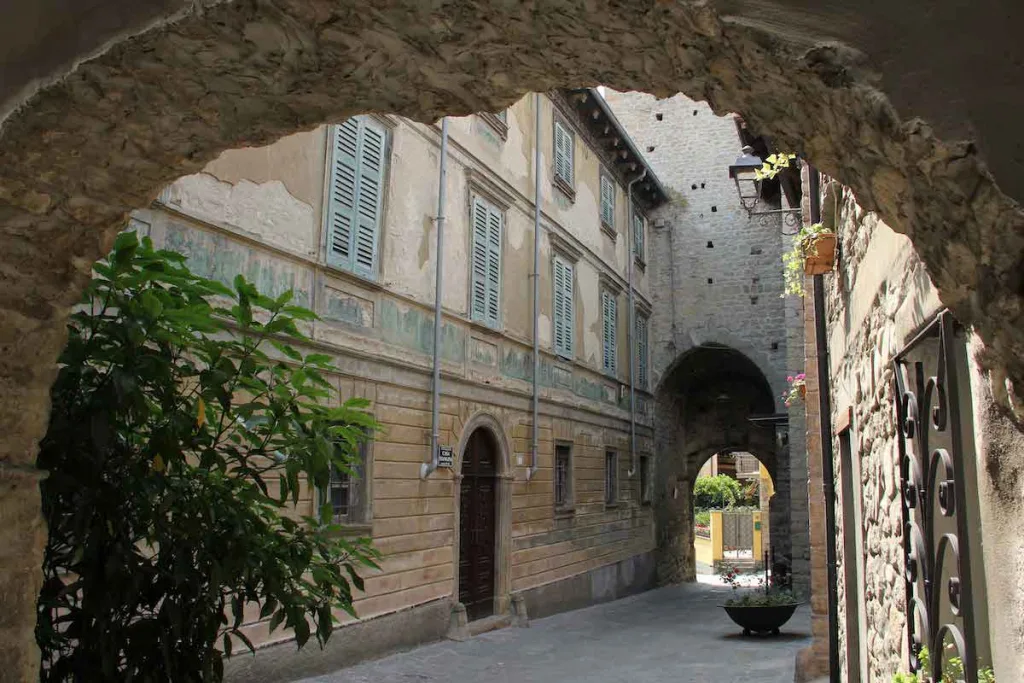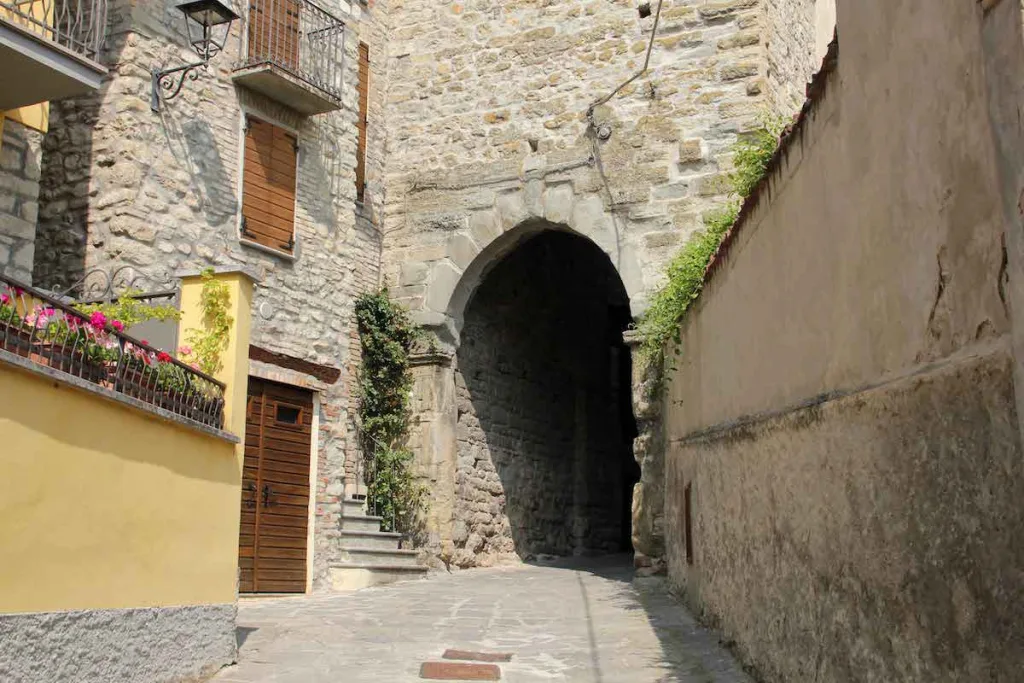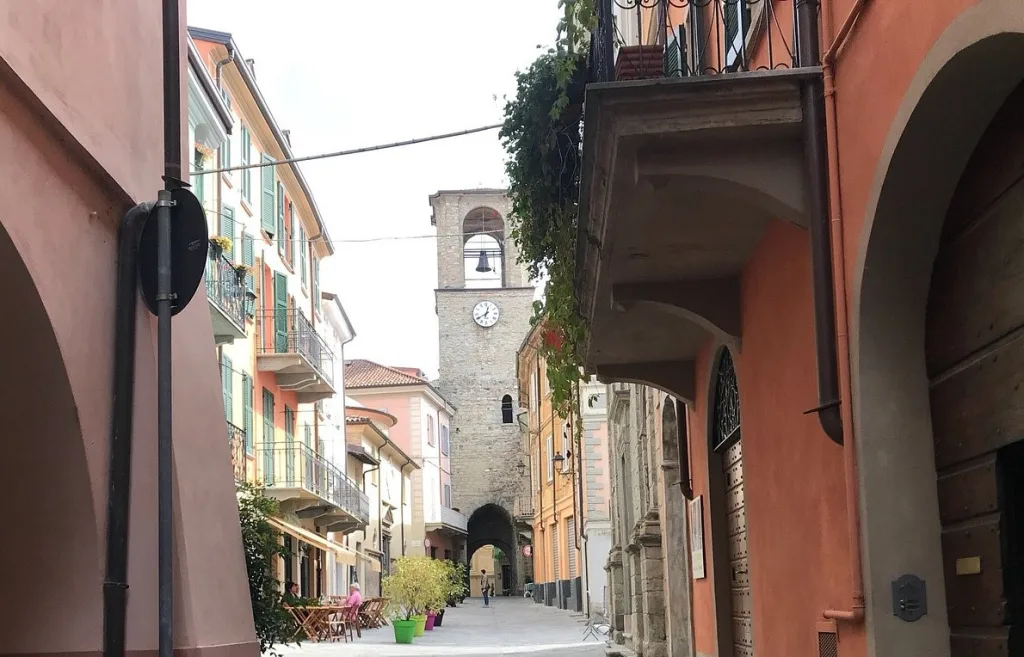Porta Soprana and Porta Sottana, in via di Dentro, are two ancient gates that have watched over the oldest part of Varzi for centuries. They bear witness to an important history of the town.
Clock Tower
Porta Soprana is located to the east at the highest point of the street. It is also known as the "Clock Tower" because it was raised in the 19th century to house the bell of the public clock. This gate also had an administrative function: it was used to collect taxes from travellers and merchants entering Varzi.

The historical heritage of Porta Sottana
Porta Sottana, on the other hand, is on the western side. Although it was built at the same time as Porta Soprana, there are significant differences. This gate, which is twenty metres high, has not been modified over the years like its eastern counterpart and has preserved its original appearance. It is divided into four levels, with a pedestrian and carriageway under the tower, characterised by a brick barrel vault supported by two pointed arches. The first two floors could have been used for residential or defensive purposes. The top floor, on the other hand, is enclosed by the exposed roof structure, with wooden beams resting on the masonry.

Porta Sottana is distinguished by the remarkable preservation of its original quadrangular layout. Its stone walls, which still resist the passage of time, testify to the solidity and strength of the architecture of the time. A fascinating detail is the presence of the hinges of the city gate, carved in stone, which can still be admired.
Porta Sottana also played an important role in controlling access to the city and the collection of taxes.
Both gates thus bear witness to the historical and strategic importance of Varzi over the centuries. Today they are a tourist attraction and a point of reference for the town's citizens.

The role of the casone as a guardhouse
On the right-hand side of Porta Sottana is a building known as the 'casone', which once served as a guardhouse for the gendarmes responsible for controlling people and goods in transit. Two fireplaces of historical and artistic significance are preserved inside the casone, a precious reminder of the past and the daily life of those who lived and worked here.
- The staircase to the patrol path
Inside the casone is a staircase that led to the patrol path on the castle wall, the place where guards patrolled the walls, ensuring the safety of the town and controlling access.
Villa Mangini
Next to Porta Sottana, on the opposite side, is a residence built in the 18th century by the Mangini family. This residence reflects the opulence and social importance of the family. The Mangini residence was conceived with a magnificence worthy of their high status, presenting majestic architecture and elaborate ornamentation. The architectural complex consists of several elements that integrate to form an imposing residence. The manor house, built in Art Nouveau style, extends over three floors. It faces the Staffora stream and from its terrace one can enjoy a suggestive and panoramic view.
The surrounding garden is characterised by the presence of majestic trees, such as poplars and cypresses.
Next to the manor house is a building known as the 'former stables', while in the centre of the complex stands the medieval tower communicating with the guardhouse.










